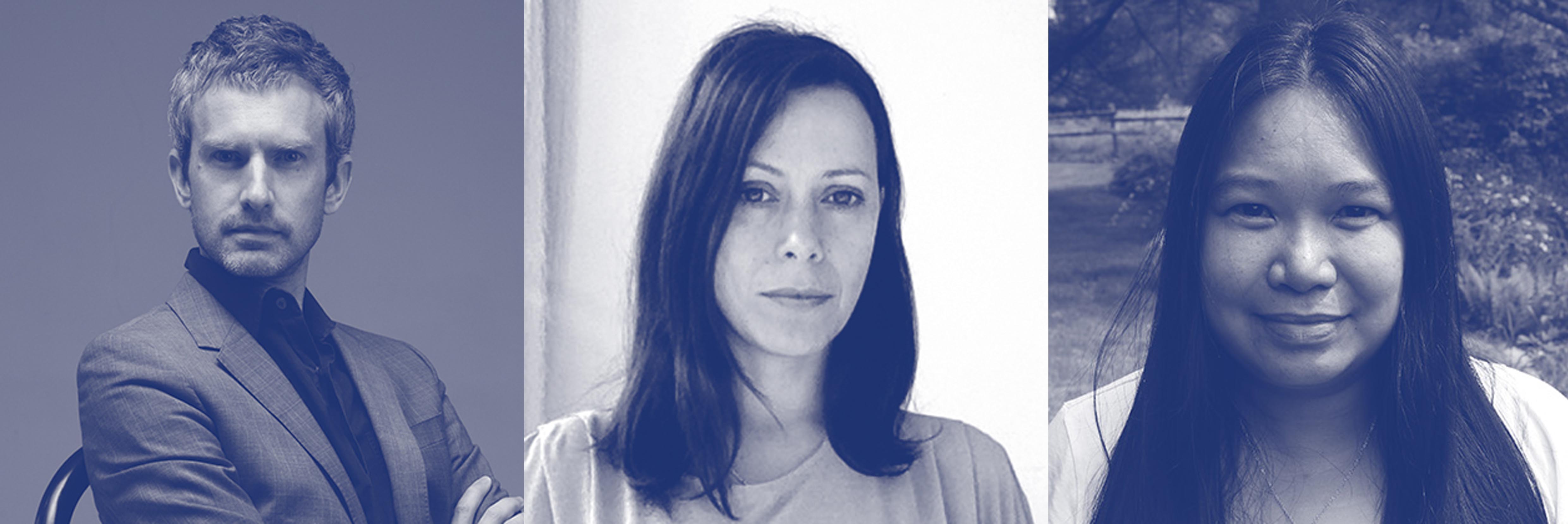Submitted by WA Contents
Harvard GSD Announces 2015 Wheelwright Prize Finalists
United Kingdom Architecture News - Apr 05, 2015 - 10:58 6248 views

Variable Measure Photography © Ben Premeaux,Zoo, or the Letter Z, just after Zionism Photography ©Johannes Schwarz,a factory building facade Photography © Kenneth Choo
Finalists’ Work — left to right
Quynh Vantu’s installation Variable Measure (McColl Center for Art and Innovation, 2014) invites viewers into a space with walls, ceilings, and corridors defined by light and haze.
Malkit Shoshan’s exhibition Zoo, or the Letter Z, just after Zionism (exhibited at NAiM, 2011) features a cage that transforms into a house and falls apart.
Erik L'Heureux’s design of a factory building facade (Singapore, 2009–12) features a lightweight EIFS (exterior insulation and finishing system); the profile of the "deep veil" is a changing geometry geared at increasing performance.
Three candidates selected from among 200 applicants for $100,000 travel-based architectural research grant
Harvard University Graduate School of Design (GSD) is pleased to announce the finalists of the 2015 Wheelwright Prize, a $100,000 grant awarded annually to a single architect to support travel-based architectural research. Established in 1935 for Harvard GSD alumni, the prize—previously known as the Arthur C. Wheelwright Traveling Fellowship—was transformed by the GSD leadership in 2013 into an open international competition available to early-career architects worldwide, with the aim of fostering new forms of research informed by cross-cultural engagement.
As in the previous two cycles, the 2015 Wheelwright Prize received nearly 200 submissions. The number of countries represented has expanded, from 46 last year to 51 this year, including Azerbaijan, Bosnia, Cuba, Egypt, Iran, Kazakhstan, Morocco, Poland, Sri Lanka, Ukraine, Zimbabwe, and more. From this rich pool of applicants, the jury selected three finalists who have been invited to speak at Harvard GSD on April 16, to present their work and research proposals. The presentations will be held at the Harvard GSD and the event is free and open to the public. A winner will be announced at the end of April.
“The strength and diversity of the applications are growing each year, making the jury’s job increasingly difficult,” said K. Michael Hays, Wheelwright Prize organizing committee member and 2015 jury chair. “It’s gratifying to see so many young architects approach their work as part of larger intellectual projects.”
The three finalists are listed in alphabetical order:

Erik L’Heureux (left),Malkit Shoshan(middle),Quynh Vantu(right)
Erik L’Heureux — Pencil Office, Singapore
BA in Architecture 1996, Washington University; MArch 2000, Princeton University
Erik L’Heureux is currently an Assistant Professor at the National University of Singapore, where he researches building envelopes in equatorial climates. He taught previously in the Irwin S. Chanin School of Architecture at the Cooper Union. He is a registered architect in the U.S., and is NCARB-certified and LEED-accredited. He has won numerous design awards including the 2013 World Architecture Festival (WAF) Category Design Award, the 2013 FuturArc Green Leadership Architecture Merit Award, 2012 AIA New York City Design Merit Award, and 2011 President’s Design Award from Singapore. He co-curated and designed the exhibition 1,000 Singapores: A Model of the Compact City, which first appeared at the Venice Architecture Biennale in 2010, and which will be presented later this year at the Cité de l’Architecture et du Patrimoine in Paris. He is also a contributing editor to Architectural Review Asia Pacific and has published in several publications worldwide. Wheelwright proposal:Hot and Wet:The Equatorial City and the Architectures of Atmosphere.
Malkit Shoshan— FAST, Amsterdam
BArch 2004, Technion–Israel Institute of Technology; current Ph.D. candidate TU Delft–Delft University of Technology
Malkit Shoshan is the founder of the Amsterdam-based architectural think-tank FAST (Foundation for Achieving Seamless Territory). Her work explores the relationship between architecture, politics, and human rights. She is the author of the award-winning book Atlas of Conflict: Israel-Palestine (Uitgeverij 010, 2010) and coauthor of Village: One Land Two Systems and Platform Paradise (Damiani Editore, 2014). She is a member of the editorial board of Footprint, the TU Delft architecture theory journal and her work has been published in Volume, Abitare, Frame, Haaretz, New York Times, and other publications. She has also exhibited at the Venice Architecture Biennale (2002, 2008), the Netherlands Architecture Institute (2007), Experimenta (2011), and the Het Nieuwe Instituut (2014). As a research fellow at the Het Nieuwe Instituut, she is working on a long-term research project entitled Drones and Honeycombs, a study of the architecture and landscape of war and peace.Wheelwright proposal:Architecture and Conflict: Pre-Cycling the Compound.
Quynh Vantu— Studio Quynh Vantu, London
BArch 2001, Virginia Polytechnic Institute and State University; MArch 2009, Cranbrook Academy of Art; current Ph.D. candidate at the Bartlett School of Architecture–University College London
Quynh Vantu is a licensed architect and artist with a studio-based practice devoted to spatial experimentation. Drawing from her upbringing in the American South, Vantu is particularly interested in the notion of hospitality and thresholds of social interaction. She has received numerous awards and grants, including a Worldstudio AIGA Grant (2009) and the Stewardson Kefee LeBrun Travel Grant-AIA NY (2009–10). She has been awarded several artist residencies, including at the Bemis Center for Contemporary Arts in Omaha, Nebraska (2010); Olafur Eliasson’s Institut für Raumexperimente in Berlin, Germany (2010–11); the Gyeonggi Creation Center in Dabudo, South Korea (2012); the Skowhegan School of Painting and Sculpture in Skowhegan, Maine (2012); the McColl Center for Art and Innovation in Charlotte, North Carolina (2014); and the Norrköping AIR in Sweden (2014). She was the recipient of a Fulbright Fellowship to study in the UK (2012–13), and of a University College London Scholarship to pursue a Ph.D. at the Bartlett School of Architecture. Wheelwright proposal:On Movement:The Threshold and Its Shaping of Culture and Spatial Experience.
2015 ’ Wheelwright Prize Finalists Presentations
April 16, 2015
Noon–2 p.m.
Free and open to the public.
Harvard GSD
Piper Auditorium, Gund Hall
48 Quincy Street
Cambridge, MA 02138
Also on April 16, in Piper Auditorium at 6:00 pm, as part of Harvard GSD’s Spring Lecture series, the winner of 2013 Wheelwright Prize Gia Wolff will present Floating City:The Community-Based Architecture of Parade Floats, reporting on her research over the past two years on carnival festivals.
> via wheelwrightprize.org
